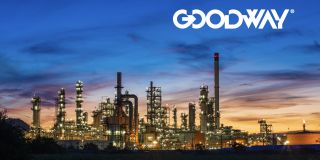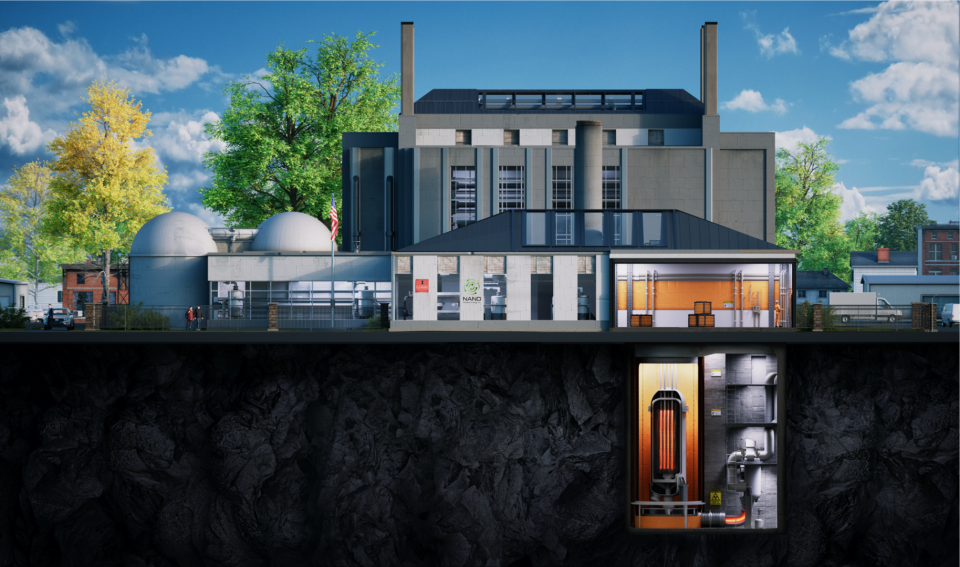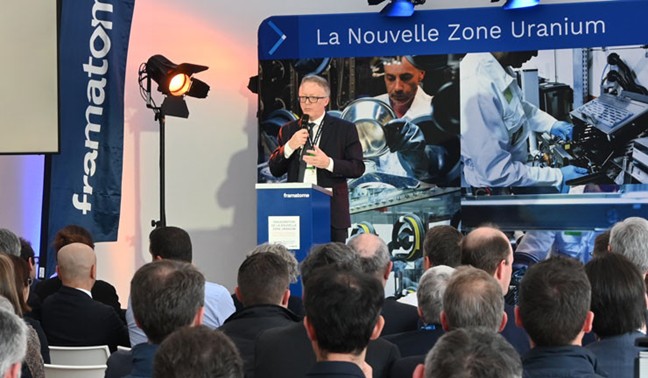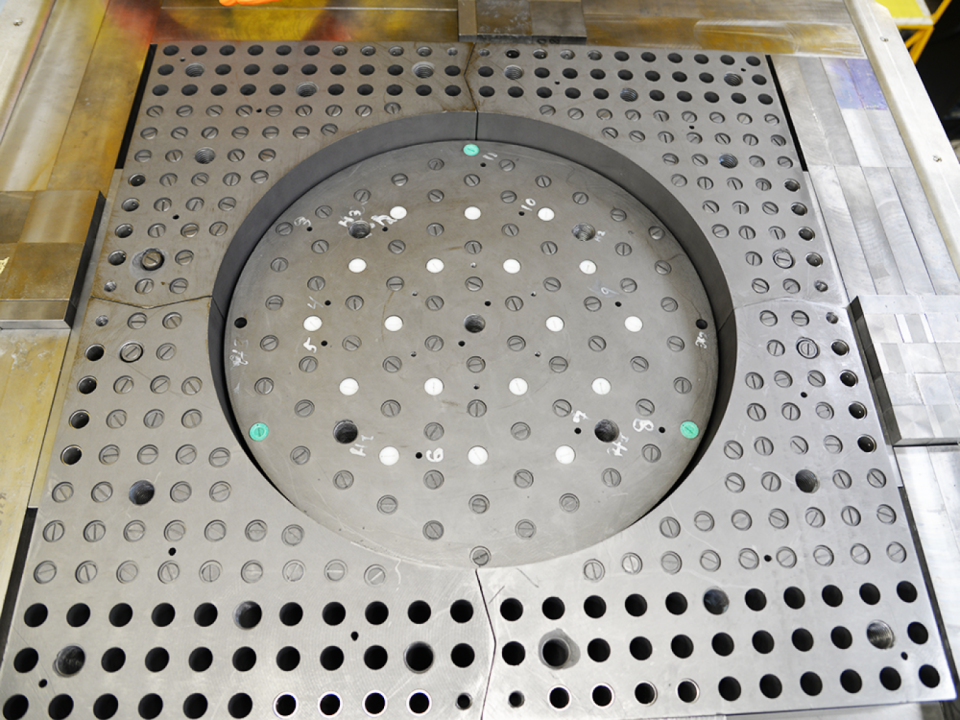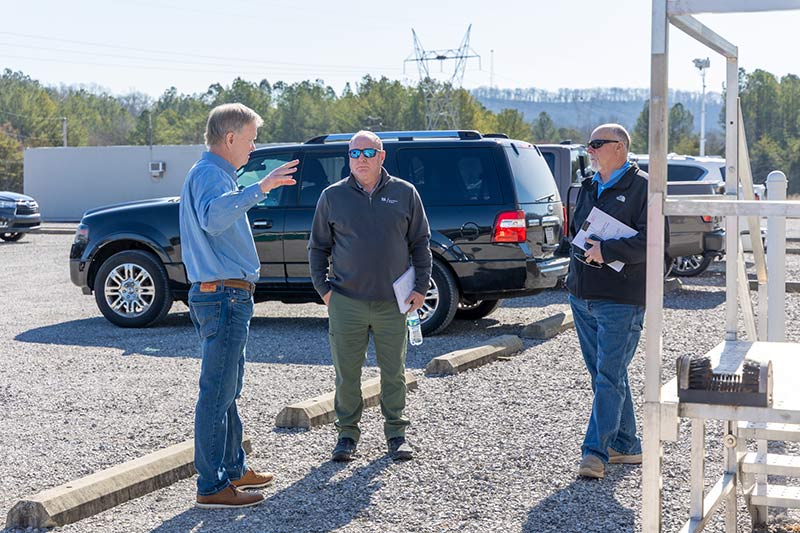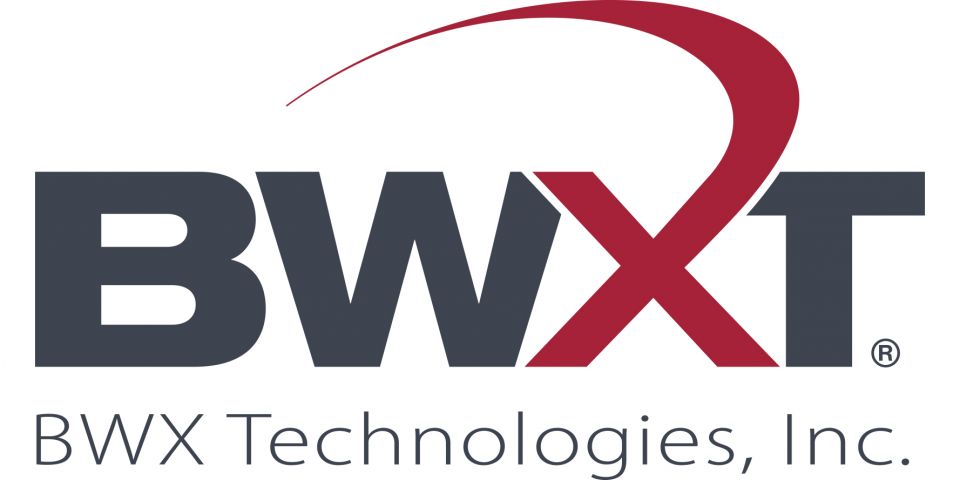UIUC microreactor fuel qualification methodology gets safety approval
The University of Illinois at Urbana-Champaign Nuclear Plasma and Radiation Engineering (NPRE) Department announced yesterday that the Nuclear Regulatory Commission has approved a fuel qualification methodology topical report for the high-temperature gas-cooled reactor the university wants to construct. The topical report was prepared by Ultra Safe Nuclear and submitted by UIUC to the NRC in March 2024. It describes the fuel that would be used in the microreactor that UIUC plans to host—initially containing uranium enriched to 9.9 percent U-235—and how it would be tested. The NRC issued its approval and a final safety evaluation on April 1.
The Illinois microreactor: UIUC told the NRC it intended to apply for a construction permit to build a USNC microreactor in 2021. After USNC declared bankruptcy in 2024, NANO Nuclear Energy acquired some of the company’s reactor technologies and is now developing the “micro modular reactor” it has renamed the Kronos MMR. UIUC and NANO Nuclear agreed on plans to continue the project in early April, and NANO Nuclear joined UIUC in welcoming the news of the fuel qualification approval yesterday.
“Fuel is one of the biggest sources of uncertainty in any advanced nuclear project,” said Caleb Brooks, an associate professor with the Grainger College of Engineering’s NPRE and director of the Illinois Microreactor RD&D Center. “This favorable regulatory outcome represents a significant reduction in that uncertainty for our project, and the SE [safety evaluation] establishes a common language between us and the regulator on how the fuel will be shown, with high assurance, to be safe and effective.”
“With this regulatory foundation in place, we are prepared to execute,” said Florent Heidet, chief technology officer and head of reactor development for NANO Nuclear. “Our next steps include finalizing fuel fabrication timelines, preparing and submission of the construction permit this year, and completing early-stage site work at U of I, including geotechnical drilling and environmental assessments. We will keep accelerating until the reactor is operating.”
Power and enrichment limits: The Kronos MMR is an HTGR with a unit design power limit of 45 MWt. But on the UIUC campus, the reactor’s operating power level “will not exceed the research reactor license limit, currently 10 MWt.” Despite that limit, the fuel qualification topical report is based on the reactor’s design power limit of 45 MWt.
The Kronos MMR is designed for fuel made with high-assay low-enriched uranium (HALEU) enriched up to 19.75 percent, but as explained in the topical report, the UIUC research reactor “will initially be fueled with a nominal 235U enrichment of 9.9 percent (referred to as ‘LEU+’).” An enrichment level below 10 percent U-235 keeps the fuel and its associated fuel fabrication and transportation licensing requirements within the NRC’s Category III regulations for special nuclear material—the same category as fuel for current U.S. power reactors.
More on the fuel: The publicly released topical report and safety evaluation discusses the manufacture of the fuel,
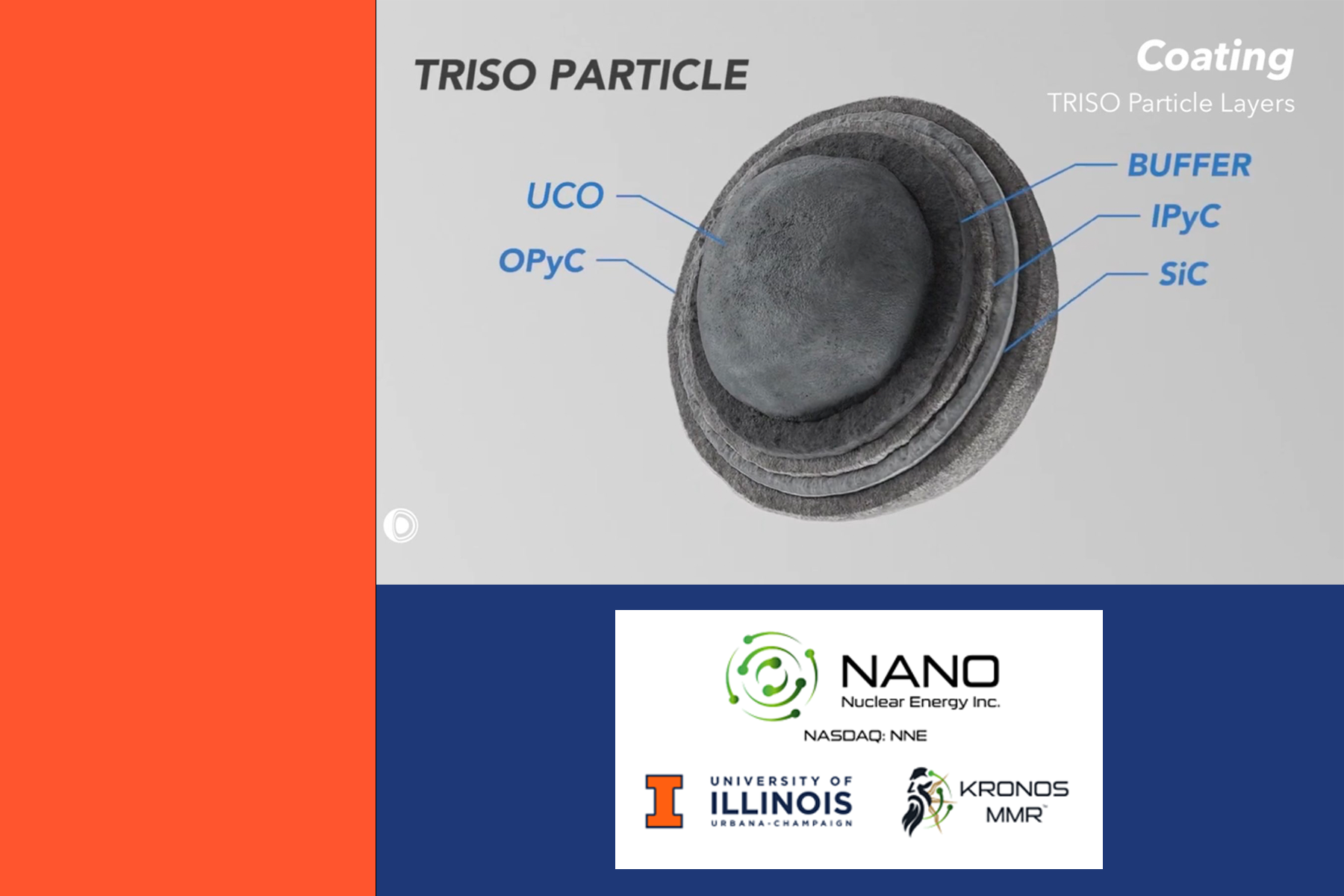
UIUC and NANO Nuclear have received NRC approval of the fuel qualification methodology for the Kronos MMR. (Image: UIUC)
with some redactions. The Kronos MMR would use TRISO fuel particles, a technology that is built on decades of Department of Energy research on TRISO-based HTGR fuels.
Inside the MMR, uranium oxycarbide (UCO) TRISO particles would be embedded in a silicon carbide (SiC) ceramic matrix in the form of trademarked fully ceramic microencapsulated (FCM) fuel pellets. That SiC matrix is designed to provide “an additional layer of defense-in-depth for the retention of fission products by functional containment.” The pellets would be stacked in columns in solid hexagonal graphite fuel blocks.
According to the report, “The FCM fuel pellets used for fuel qualification will be manufactured using this equipment and processes in the USNC-owned and operated Pilot Manufacturing Facility located near Oak Ridge, Tenn.” (While some of USNC’s assets went to NANO Nuclear, others remained with Standard Nuclear, USNC’s stalking horse bidder, which is based in Oak Ridge.)
Testing plans: The topical report describes two types of irradiation testing planned for the FCM fuel pellets.
At the Petten High Flux Reactor in the Netherlands, “steady-state, long-term irradiation testing (months to years) will be used to test the integral performance of FCM fuel pellets under conditions that bound MMR operating conditions.” Separately, “short-duration irradiation testing (minutes to hours) will be used to provide information on the failure threshold of FCM pellets operating at high power densities.” The short-duration transient testing, representing postulated accident conditions, will be conducted at the Massachusetts Institute of Technology’s research reactor in Cambridge, Mass.
Audited: After the NRC accepted the topical report for review, four audit meetings were conducted in the late summer and fall 2024 to discuss questions. USNC then produced a new version of the topical report in December 2024 that addressed the NRC staff’s questions. That is the version of the report approved by the NRC.
The NRC collaborated with the Canadian Nuclear Safety Commission on portions of the audit, and the U.K.’s Office for Nuclear Regulation also participated in some audit activities as an observer. Despite the international collaboration, the UIUC topical report is applicable only to the UIUC project.
However, NANO Nuclear stated in its press release that the company “believes that final approval of the FQM TR by the NRC demonstrates confidence in the methodology’s scientific soundness and regulatory compliance, offering a repeatable pathway for advanced fuel qualification applicable to NANO Nuclear reactors.”

